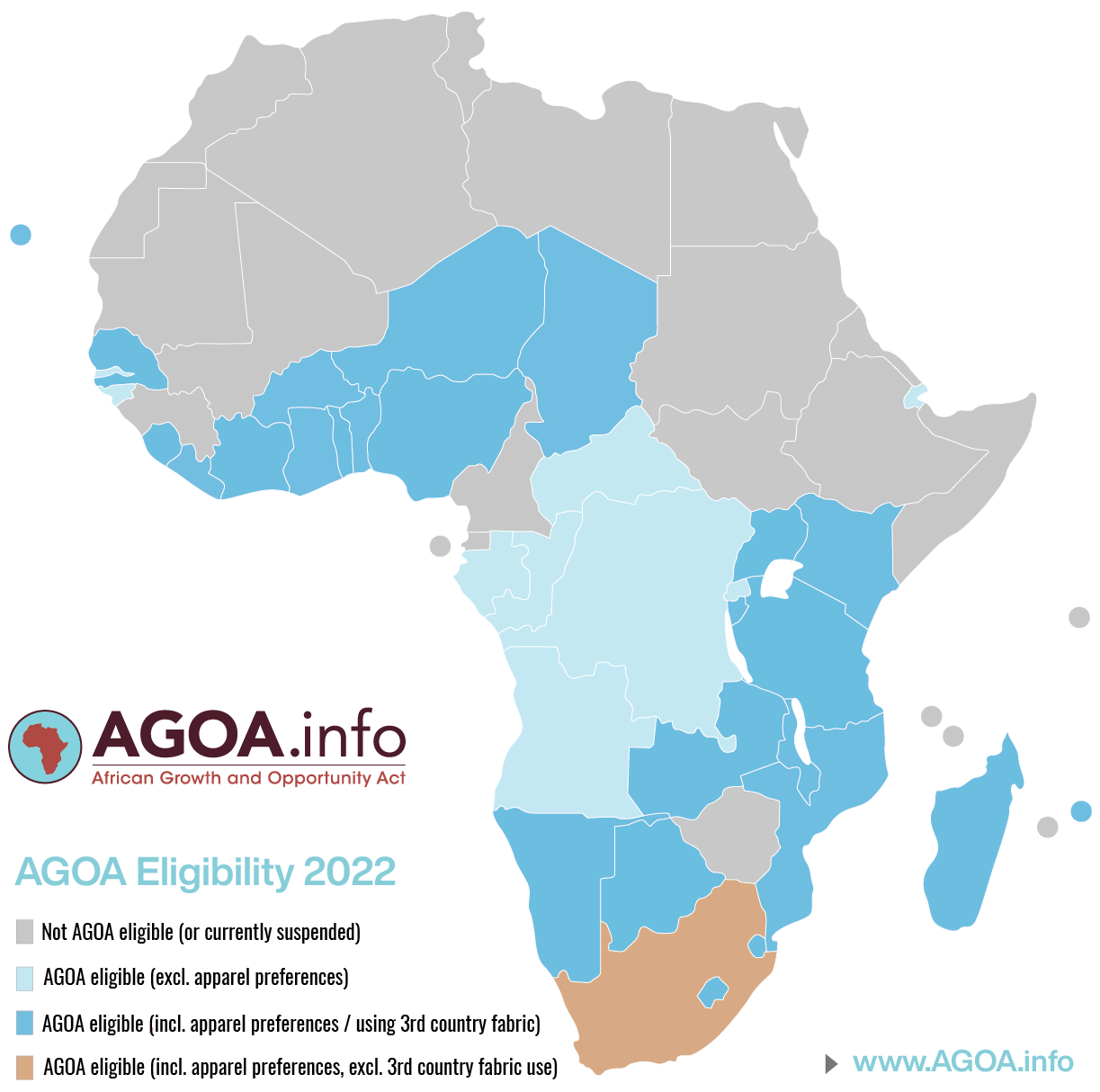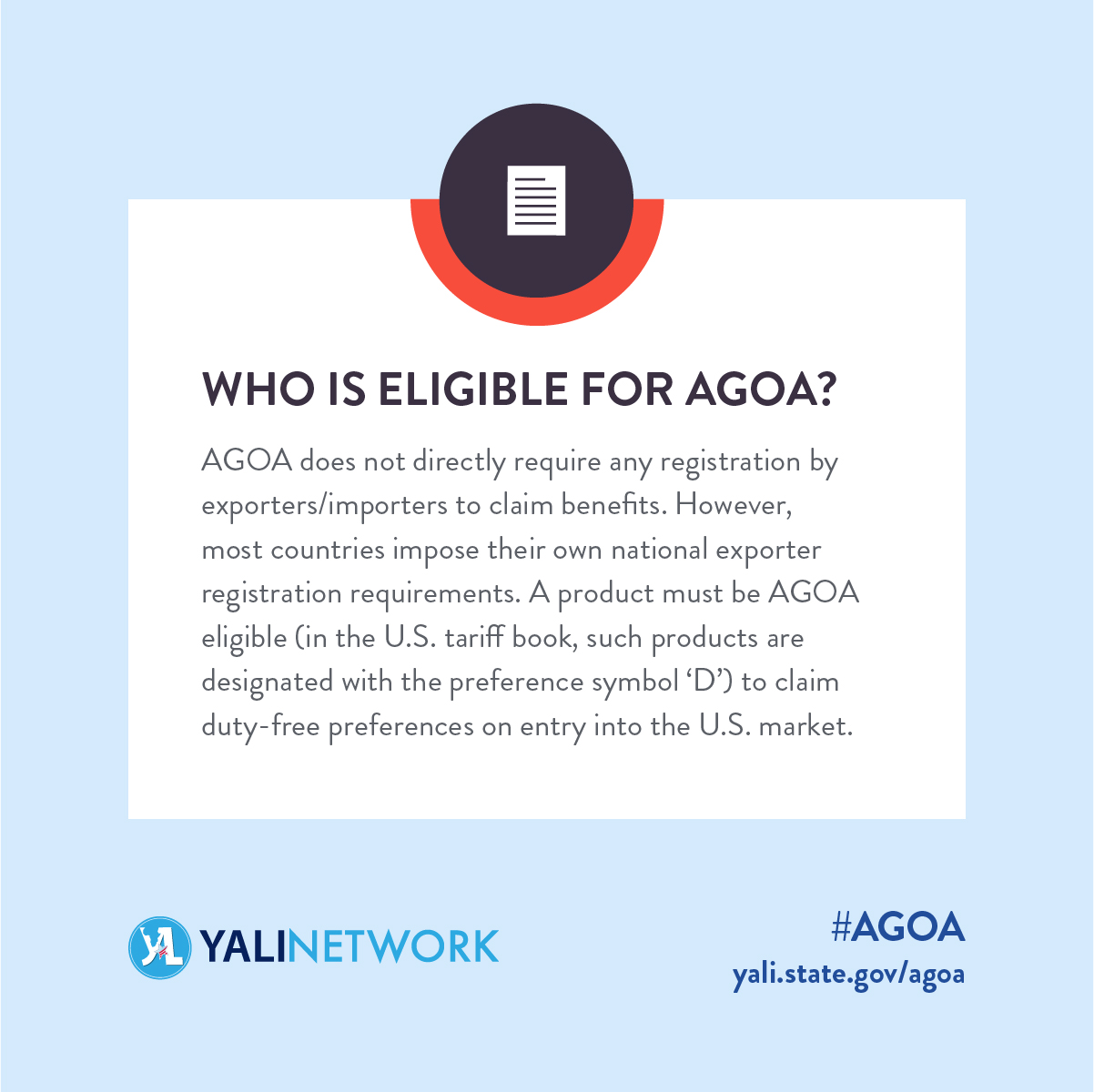2025 AGOA Eligibility Hearing: What You Need To Know And Why It Matters
Hey there, let’s dive into something big that’s about to shape the future of trade policies in Africa. The 2025 AGOA Eligibility Hearing is right around the corner, and it’s more important than ever. If you’re scratching your head wondering what AGOA even stands for, don’t worry, we’ve got you covered. The African Growth and Opportunity Act (AGOA) is a game-changer for African nations, offering them a golden ticket to the U.S. market without those pesky tariffs. This hearing could redefine how countries benefit from AGOA, so buckle up!
Now, you might be thinking, "Why should I care?" Well, this isn’t just some boring political jargon. It’s all about jobs, economic growth, and opportunities for millions of people. The AGOA program has been a lifeline for many African nations, helping them boost exports and create jobs. But here’s the deal: not everyone gets to play nice in this sandbox. The eligibility criteria are strict, and countries need to prove they’re playing by the rules.
So, whether you’re an entrepreneur in Kenya, a policymaker in Nigeria, or just someone curious about global trade, this hearing is going to affect you. Let’s break down what’s at stake, why it matters, and how you can stay ahead of the curve. Trust me, by the end of this, you’ll be an AGOA expert!
Read also:Lightblue Gov The Future Of Government Technology Simplified
Table of Contents
- What is AGOA?
- AGOA Eligibility Criteria
- Why the 2025 Hearing Matters
- Current Status of AGOA Countries
- Challenges Facing AGOA Nations
- Economic Impact of AGOA
- Predictions for AGOA’s Future
- Potential Policy Changes
- How Countries Can Prepare
- Wrapping It Up
What is AGOA?
Alright, let’s start with the basics. AGOA, or the African Growth and Opportunity Act, is like a superpower for African nations when it comes to trading with the U.S. This act, which started back in 2000, gives certain African countries special access to the U.S. market. It’s kinda like a VIP pass that lets them export goods without paying those hefty tariffs. Sounds sweet, right?
But here’s the kicker: not every African country gets this privilege. Only those who meet specific criteria can join the AGOA club. And every few years, the U.S. government holds hearings to make sure these countries are still playing fair. This year, the 2025 eligibility hearing is on the horizon, and it’s going to be a big deal.
So, what exactly does AGOA do? It helps African countries grow their economies, create jobs, and reduce poverty. By giving them a leg up in the global market, AGOA encourages trade instead of aid. It’s all about empowering these nations to stand on their own two feet. Now, let’s dig deeper into how it all works.
AGOA Eligibility Criteria
Meeting the Standards
Not just any country can walk into the AGOA party. To qualify, nations need to meet some pretty strict criteria. First off, they have to show they’re working towards a market-based economy. That means no more playing by old-school socialist rules. They also need to respect the rule of law, human rights, and labor standards. Oh, and let’s not forget about fighting corruption. Yep, it’s a tall order.
But wait, there’s more. Countries must also demonstrate that they’re making efforts to eliminate barriers to U.S. trade and investment. Think about it like this: if you’re inviting someone to your house, you better make sure the door is unlocked and the welcome mat is out. AGOA is all about creating a level playing field for everyone involved.
Here’s a quick rundown of the eligibility requirements:
Read also:Wendy Williams Leaked The Inside Scoop You Need To Know
- Market-based economy
- Respect for rule of law and human rights
- Efforts to eliminate trade barriers
- Fighting corruption
Why the 2025 Hearing Matters
Now, let’s talk about why the 2025 eligibility hearing is such a big deal. This isn’t just another bureaucratic meeting; it’s a chance for countries to prove they’re still worthy of AGOA’s benefits. If a country doesn’t meet the criteria, they risk losing their VIP pass. And trust me, that’s a blow no one wants to take.
For African nations, AGOA is more than just a trade agreement. It’s a lifeline that helps them compete in the global market. Without it, many countries would struggle to maintain their exports to the U.S., which could lead to job losses and economic downturns. So, this hearing isn’t just about politics—it’s about people’s livelihoods.
Plus, with the world changing faster than ever, AGOA needs to evolve too. The 2025 hearing is an opportunity to reassess the program and make sure it’s still meeting its goals. Are the criteria still relevant? Are the benefits still impactful? These are questions that need answers, and the hearing will provide them.
Current Status of AGOA Countries
Who’s In and Who’s Out?
As of now, there are 38 countries eligible for AGOA benefits. But that number isn’t set in stone. Every year, countries are added or removed based on their performance. Some nations have been rock stars, consistently meeting the criteria and reaping the rewards. Others, not so much.
Take Nigeria, for example. It’s been a major player in AGOA, using the program to boost its oil and gas exports. But it’s also faced challenges, like corruption and human rights issues, that could jeopardize its eligibility. On the other hand, countries like Kenya have been shining examples of how AGOA can work. They’ve diversified their exports and created thousands of jobs thanks to the program.
Here’s a snapshot of where some key countries stand:
- Nigeria: Strong exporter but faces governance issues
- Kenya: Success story with diversified exports
- South Africa: Major player with robust economy
Challenges Facing AGOA Nations
Let’s get real for a second. AGOA isn’t without its challenges. For starters, many countries struggle to meet the eligibility criteria consistently. Corruption, human rights violations, and economic instability can all throw a wrench in the works. And let’s not forget about global competition. With so many countries vying for a piece of the U.S. market, AGOA nations need to stay sharp.
Another issue is diversification. Too many countries rely heavily on exporting raw materials, like oil and minerals. While these can bring in big bucks, they’re not sustainable in the long run. AGOA encourages nations to diversify their exports, but that’s easier said than done. It takes time, resources, and a lot of effort to shift from raw materials to value-added products.
Then there’s the whole geopolitical landscape. With China and other nations increasing their presence in Africa, the U.S. needs to step up its game. AGOA is one way to do that, but it requires continued investment and support. Without it, African nations might start looking elsewhere for trade partners.
Economic Impact of AGOA
Numbers Don’t Lie
When it comes to AGOA, the numbers speak for themselves. Since its inception, the program has helped African nations increase their exports to the U.S. by leaps and bounds. In 2022 alone, AGOA countries exported over $30 billion worth of goods to the U.S. That’s a lot of money flowing into African economies.
But it’s not just about the big numbers. AGOA has also created jobs for millions of people across the continent. From textile workers in Lesotho to oil rig employees in Angola, the program has touched countless lives. And let’s not forget about the small businesses that have benefited too. AGOA has opened doors for entrepreneurs who might otherwise struggle to compete in the global market.
Here’s a look at some key stats:
- $30 billion in exports to the U.S. in 2022
- Millions of jobs created across Africa
- Growth in diverse sectors like textiles and agriculture
Predictions for AGOA’s Future
Looking ahead, the future of AGOA is both exciting and uncertain. With the 2025 eligibility hearing on the horizon, there’s a lot at stake. Will the criteria change? Will more countries join the program? These are questions that need answers, and the hearing will provide some clarity.
One thing’s for sure: AGOA needs to adapt to the changing global landscape. As new technologies emerge and trade patterns shift, the program must evolve to stay relevant. This could mean expanding the list of eligible products, increasing technical assistance, or even extending the program beyond its current expiration date in 2030.
But here’s the thing: AGOA’s future isn’t just about policy changes. It’s about the people it affects. From factory workers to policymakers, everyone has a stake in how AGOA develops. And that’s why the 2025 hearing is such a critical moment.
Potential Policy Changes
What’s on the Table?
When it comes to AGOA, nothing is set in stone. The 2025 eligibility hearing could lead to some significant policy changes. For starters, the U.S. government might tweak the eligibility criteria to make it more flexible. This could help more countries qualify and benefit from the program.
Another possibility is expanding the list of eligible products. Right now, AGOA covers over 6,000 products, but there’s always room for more. By adding new items, AGOA could encourage countries to diversify their exports and create even more jobs. And let’s not forget about technical assistance. Providing more support to AGOA nations could help them meet the criteria and take full advantage of the program.
Here’s a quick look at some potential changes:
- Flexible eligibility criteria
- Expanded list of eligible products
- Increased technical assistance
How Countries Can Prepare
For AGOA nations, the 2025 eligibility hearing is a wake-up call. It’s time to get serious about meeting the criteria and making the most of the program. So, how can countries prepare? First, they need to focus on governance. Fighting corruption, respecting human rights, and creating a favorable business environment are all key to staying eligible.
Next, countries should work on diversifying their exports. This means investing in sectors like manufacturing, agriculture, and technology. By moving away from raw materials, nations can create more sustainable economies and reduce their reliance on a single product. And don’t forget about collaboration. Working together with other AGOA nations can help everyone succeed.
Here’s a checklist for countries to follow:
- Improve governance and fight corruption
- Diversify exports and invest in new sectors
- Collaborate with other AGOA nations
Wrapping It Up
So, there you have it. The 2025 AGOA Eligibility Hearing is a big deal, and it’s going to shape the future of trade policies in Africa. Whether you’re a policymaker, an entrepreneur, or just someone interested in global trade, this hearing affects you. It’s all about jobs, economic growth, and opportunities for millions of people.
As we’ve seen, AGOA has made a huge impact since its inception. It’s helped African nations boost their exports, create jobs, and reduce poverty. But it’s not without its challenges. Countries need to stay vigilant and work hard to meet the criteria. And the U.S. needs to continue supporting the program to ensure its success.
So, what’s next? Keep an eye on the 2025 hearing and see how it unfolds. In the meantime, share this article with your friends and let’s keep the conversation going. Together, we can make sure AGOA continues to be a force for good in the world. And hey, if you’ve got thoughts


